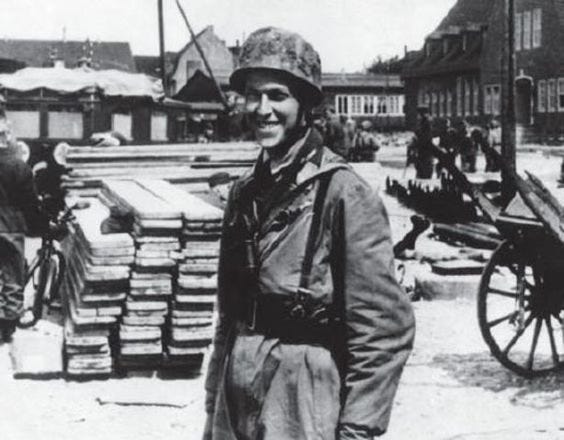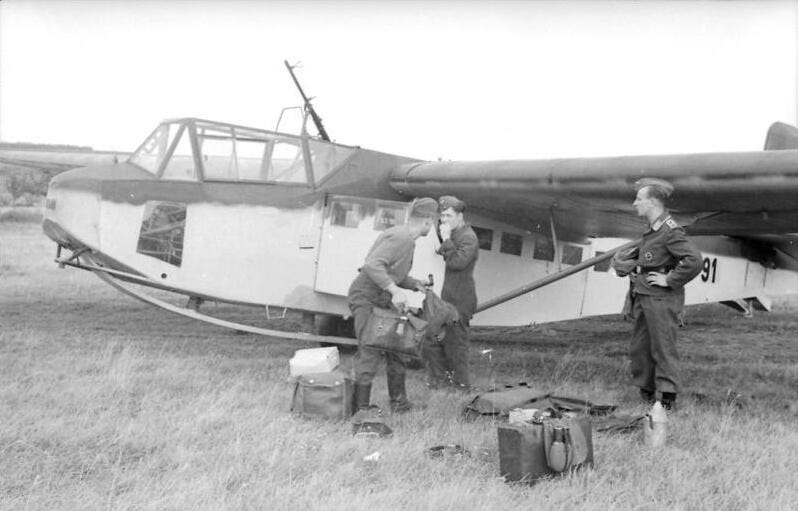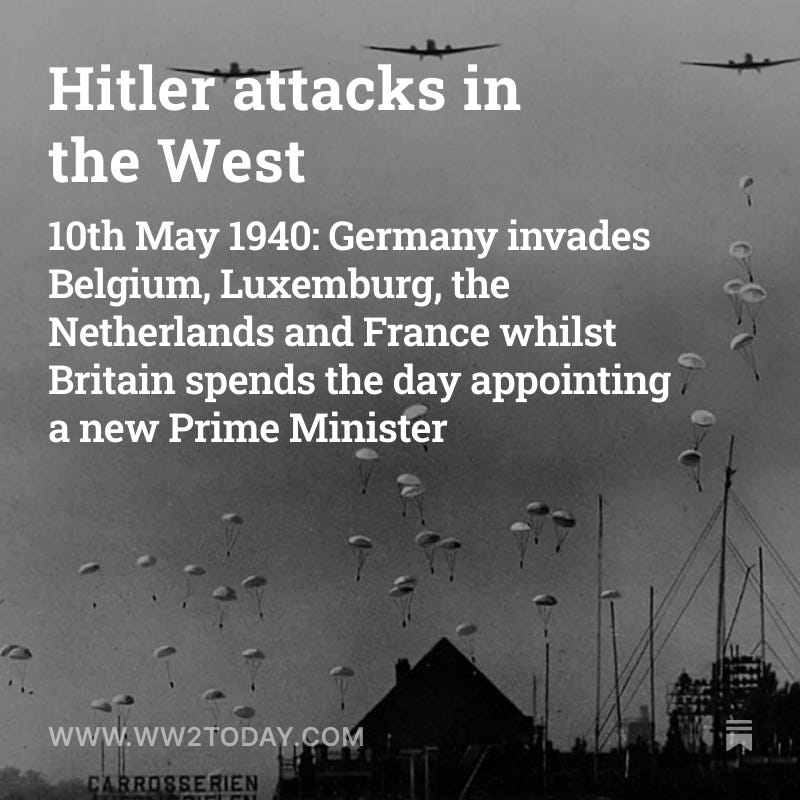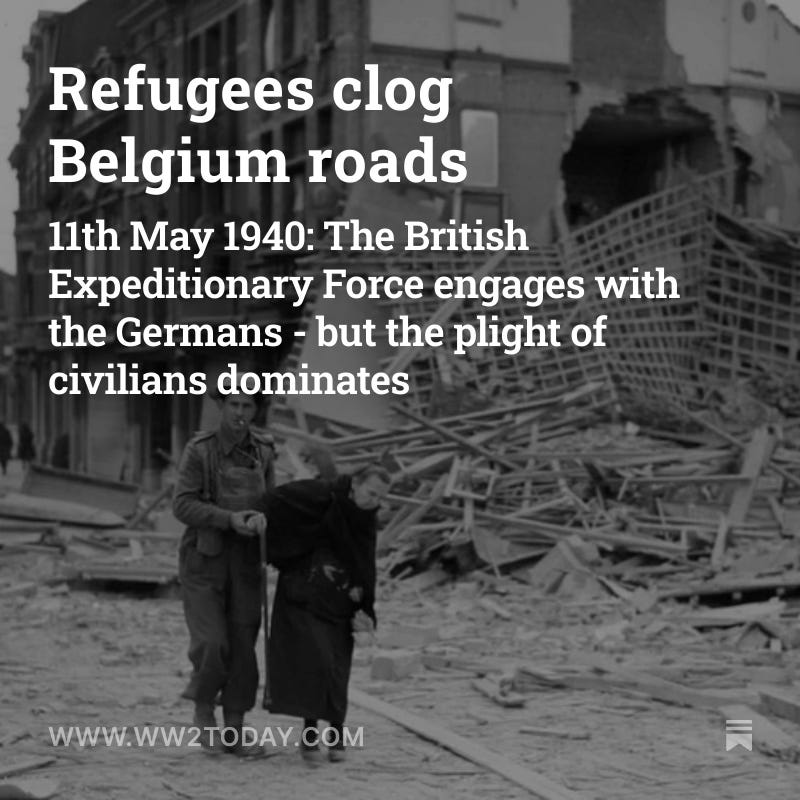'Eben-Emael'
A detailed account of how German Special Forces made a surprise attack on 'the most powerful fortress in the world'
In May 1940 Hitler shocked the world as he launched his attack on the West. Further shocks followed as it became apparent that the Germans had devised both strategies and tactics to either overcome or sidestep the defensive forts built by the Belgians and French.
The lessons these countries learnt from the ‘Great War’ were that they needed impregnable defences to defend themselves against the potential threat from Germany.
Long before Hitler came to power and emerged as a real threat, France had spent millions of Francs building the Maginot Line. Belgium began work on the Eben-Emael fortress in the 1920s. They spent a small fortune creating a state-of-the-art fortified emplacement that would dominate the critical strategic position on the Albert Canal. The invasion route into Belgium would be blocked.
But the Germans were not planning to fight the last war. Eben-Emael & the Defence of Fortress Belgium, 1940 takes a detailed look at how they created the world’s first airborne Special Forces to overcome these obstacles. And how they revolutionised military strategy around the world as they did so.
The following excerpt comes from the introductory Preface:
German victory in the West depended on a rapid advance into Belgium. German infantry and armoured units of Sixth Army needed to quickly cross the Meuse River and the Albert Canal and establish a bridgehead in Belgian territory. The bridges had to be seized in an undamaged condition in order to sustain the rapid pace of the invasion force. There were two problems: the bridges could be blown up by the Belgians at a moment’s notice, and the crossing sites were in range or the guns of Fort Eben-Emael.
Ground forces would first have to cross 30km of Dutch territory, then the Meuse River at Maastricht, then advance through the sizeable defended city before they even reached the canal bridges. It was a certainty that the Belgians and Dutch would blow up the bridges over both waterways long before the Germans arrived. Their forces would then become bogged down, giving the Allies time to move up additional troops and attempt to block their advance into central Belgium.
The only way to avoid this outcome was to launch a surprise attack by Special Forces to seize the bridges before they could be destroyed, and to take out the guns and eyes of Fort Eben-Emael. An airborne operation was possible but would require engine-driven transports which could be detected by the listening posts. The Germans needed stealth and silence. The solution was a glider-borne task force.
VII Flieger (Airborne) Division, which had operational control of parachute and transport units, was ordered to look into the feasibility of using gliders for tactical missions. The Luftwaffe had in its inventory the DFS 230 assault glider, developed by the Deutsche Forschungsanstalt fur Segelflug (German Research Institute for Sailplane Flight). The DFS 230 could carry ten men plus explosive charges and equipment. The glider troops did not have to struggle with parachutes after landing so they could organize on the ground more quickly than paratroopers.
Test results were positive and concluded that, to reach the Belgian targets, the gliders had to be released by the transports at an altitude of 2,500m over German territory. They would then cruise at an air speed of 120kph and arrive high enough over the targets to remain undetected and to descend in a spiral to their landing points. A surprise attack on the canal bridges and Fort Eben-Emael was now possible. The operation received Adolf Hitler’s blessing.
On 3 November 1939, Sturmabteilung (Storm Division) Koch, a top-secret unit, was assembled to plan and train for the operation. It was made up of the 1st Company of 1st Parachute Regiment, one parachute engineer platoon, and the experimental troop-carrying glider detachment. No one knew the true purpose of the unit; not even the members were informed of the target.
...
Fall Gelb, or Case Yellow, the invasion of France and the Low Countries, was set to begin on 10 May 1940. At noon on 9 May Sturmabteilung Koch received the alert to prep for the operation. During the afternoon the men were taken to the airfields of Ostheim and Butzweiler, the former located 3.5km south-east of Cologne on the east bank of the Rhine and the latter 3.5km north-west of Cologne. The layout of the two airfields permitted forty-two Ju 52s to take off at intervals of 45 seconds; thirty-one tow trains from two runways at Ostheim carrying the men from Granit, Eisen and Beton, and eleven from Butzweiler carrying the Stahl team.
Four Junkers were in reserve. The squadrons needed 25 minutes to take off and assemble in the air and 31 minutes for the steep climb to an altitude of 2500m. The distance from Cologne to the canal was about 90km. Two separate routes marked the path from Cologne to Aachen, one with rotating beacons, the other with 60cm searchlights, six markers in all along the 73km route to the release point. The gliders would be released from the tow planes when the pilots spotted the terminal beacon - a cluster of three lights - on the Vetschauer Berg. From there the gliders would then travel the remaining 28km over Dutch Limburg. Landing time was scheduled for 0525hrs (0425hrs Belgian time), 90 minutes before sunrise.
At 2105hrs, a rope was unrolled behind each Ju 52 and attached to the DFS 230. After midnight the teams loaded up their designated aircraft and at precisely 0325hrs the Junkers began to move down the runway. Fifteen minutes later all eighty-four aircraft (transports and gliders) were airborne. Weather conditions were good. The ground beacons were switched on, leading the way to the release point.
Two of the gliders, one carrying Witzig, leader of the Granit group, lost contact with the main group at some point during the flight. The Ju 52 towing Witzig’s glider became uncoupled from the glider over Aachen when it was forced to avoid hitting a faster aircraft. Witzig’s glider was too low to fly long enough to reach Eben-Emael so the pilot turned back towards Cologne. Fortunately Witzig commandeered one of the reserve Ju 52s and resumed the flight. His arrival at Eben-Emael was delayed by two hours.
At 0032hrs (Belgian time), while Koch’s men were loading up the gliders and making final preparations, Fort Eben-Emael received the war alert order from Belgian III Corps. Eben-Emael’s commander, Major Jean Jottrand was called at his residence and directed to report to the fort.
Jottrand, with more of an administrative than combat background in the Belgian army, was sceptical, suspecting it was probably another of many false alarms that had taken place over the past few months. He reported quickly to the fort but until he was sure there was an actual and confirmed danger to the fort, hesitated to take immediate defensive action which, to be fair, was quite drastic and final, and included ordering the demolition of the Canne bridge and the Lanaye locks, evacuating the peacetime barracks and setting up anti-tank obstacles to block access to the fort.
At 0300hrs Jottrand received the confirmation message he was waiting for that German ground units were moving west. Observers also reported the sound of heavy gunfire coming from the north. Emergency actions were thus put into effect, but the demolition of the bridge and the locks was delayed. Soon after the alert message was received the command post switched on the fort’s warning siren that echoed throughout the tunnels.
The mission of Eben-Emael’s two MG blocs, Mi-Nord and Mi-Sud, was to defend against an infantry attack against the top of the fort. The likelihood of that taking place was just about zero, so the crews of the two blocs were sent to assist in the process of evacuating the external wooden barracks, located just outside the entrance to the fort. This included moving supplies and bunks into the fort and then setting fire to the barracks to remove cover for enemy infantry.
The crew of the twin 75mm turret designated as Cupola Nord (North Gun Turret), was tasked at some point with firing a series of warning shots using blank shells in all directions to alert Belgian infantry troops stationed along the canal of an impending attack. However, the Cupola Nord crew was also helping to evacuate the barracks. Jottrand ordered Cupola Slid (South Gun Turret) to fire the warning shots but in the process, the guns malfunctioned and they were unable to fire until after 0300hrs.
The men not on duty were awakened by the sirens and immediately proceeded to their assigned posts or were given other duties to perform. The gun crews, while placing the turret and casemate guns into combat mode, encountered a number of delays and problems. The 75mm rounds were stored in magazines on the intermediate level of the fort. The shells were stored in caissons which needed to be moved into small elevators and delivered to the turrets and casemates on the surface. There was nothing extraordinary about this but it took a considerable amount of time to complete the delivery so that each gun position would have a sufficient supply of shells ready to fire.
The Cupola Nord crew was finally relieved of the detail at the outer barracks. Upon arrival at the bloc around 0400hrs they ran into an immediate problem. The door to the shell storage magazine at the base of the bloc was locked and they could not find the custodian to give them the key. After the door was finally opened, the elevator loaded with the first caissons failed to move. The shells then had to be carried by hand up the stairs to the bloc. There was no sense of panic at this point. As far as the Belgians knew, the Germans were hours away so there was plenty of time to prepare for their arrival, or so they thought. In reality the gliders were now soaring silently over Dutch territory, ready to begin their final descent.
As they approached the four targets the gliders dropped to an altitude of 300m. Belgian troops along the Albert Canal could hear the Dutch antiaircraft guns firing in the distance. They started to sec strange shadows overhead but weren’t exactly sure what they were looking at. Some of the men fired into the air with rifles but didn’t cause any damage. Just before 0425hrs, Jottrand was standing outside the entrance to the fort to see how the movement of supplies from the outer barracks was proceeding when he spotted the outline of an aircraft circling rhe fort and realized it intended to land on top. There was now' no doubt in his mind whatsoever that Belgium, and Fort Eben-Emael, was under attack. He immediately ran inside to the command post and ordered the demolition of the Canne bridge and the Lanaye locks.
Sturmgruppe Granit had arrived.
© Clayton Donnel 2021, 'Eben-Emael & the Defence of Fortress Belgium, 1940 '. Reproduced courtesy of Pen & Sword Publishers Ltd.






